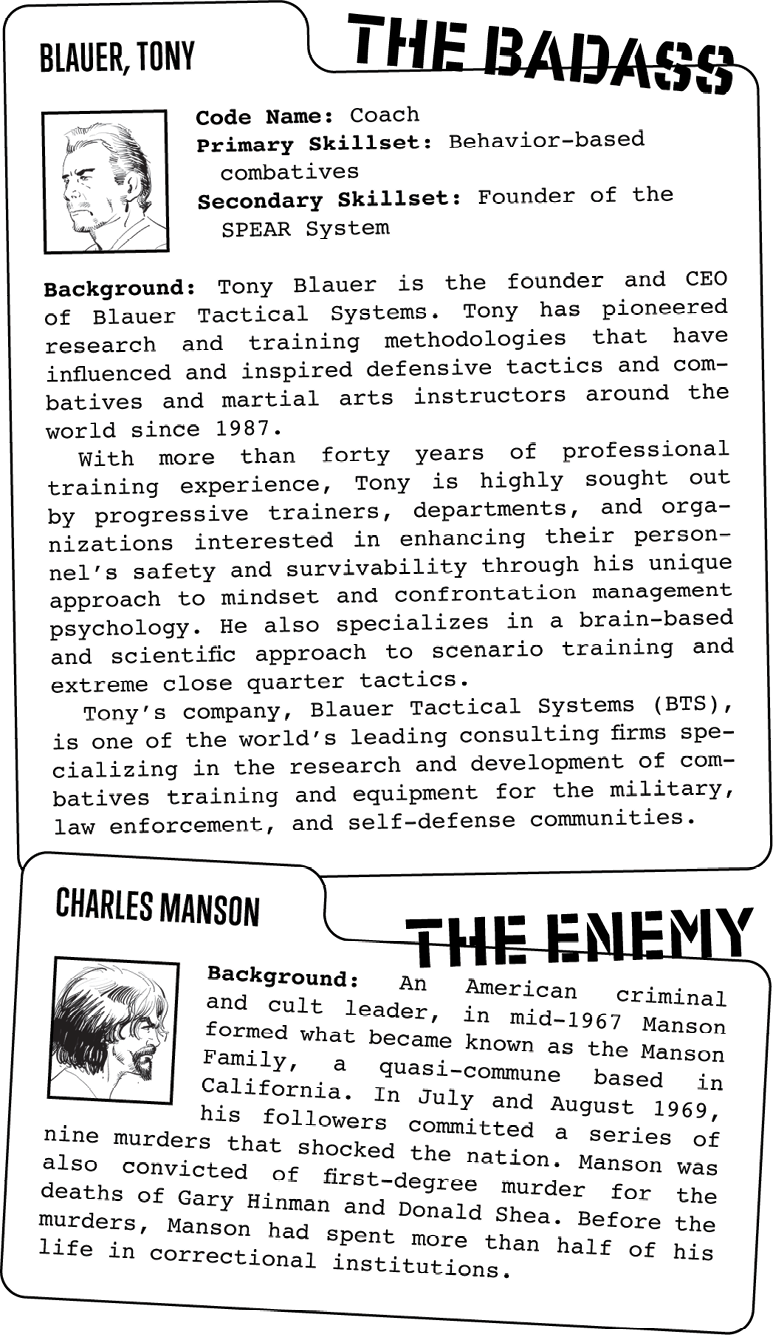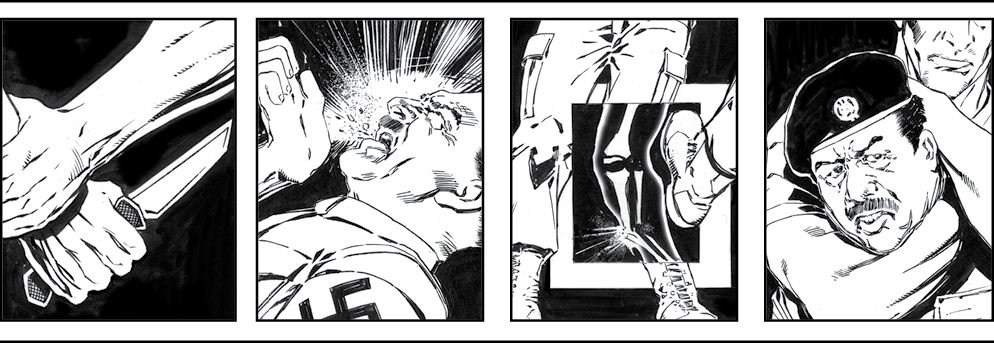
100 Deadly Skills

A Navy SEALs Guide to Crushing Your Enemy, Fighting for Your Life, and Embracing Your Inner Badass
Clint Emerson
Navy SEAL, Ret.

copyright 2021 clint emerson llc and confidential communications consultants inc.
All rights reserved.
100 deadly skills: combat edition
A Navy SEALs Guide to Crushing Your Enemy, Fighting for Your Life, and Embracing Your Inner Badass
isbn 978-1-5445-1886-2 Paperback
isbn 978-1-5445-1885-5 Ebook
Contents
a note to readers
Welcome to the third installment in the 100 Deadly Skills series, a special combat edition featuring embedded video content. The skills featured in its pages were provided by special operations personnel, professional fighters, outlaw motorcycle club members, and world-class martial artistsa cadre of experts who have tested the limits of their endurance, precision, and ingenuity under life-threatening conditions. Lending their deadliest protocol to the cause of enhancing public safety, theyve shared secrets of the trade meant to assist anyone faced with a dangerous situation.
The resulting manual is intended to expose civilians to a variety of fighting systems, martial arts, weapons, and firearms used in combat, on the streets, and in the ring. Adapted for civilian use, the skills in this book are meant to help you overcome a range of deadly situations, from getting ambushed by armed robbers to being caught in the crosshairs of an active shooter or stabbed by a psychopath. The books purpose is to save livesyours and those of the people around you.
Still, as the title of the book implies, some of the skills are extremely dangerous, and many should only be attempted in the direst of situations. All require the application of personal judgment, their necessity in any given situation highly dependent on context. The authors, subject-matter expert contributors, illustrator, and publisher disclaim any liability from any injury that may result from the use, proper or improper, of the information contained in this book. The stated goal of the book is not to enable deadly actions but to entertain while simultaneously introducing a body of knowledge that may come in handy in the absolute direst of emergencies.
Be deadly in spirit but not in action (unless the actions against you are deadly). Respect the rights of others and the laws of the land. May the strongest survive.
Introduction
That smartphone in your pocket isnt going to save you from an unexpected left hook or a weapon you didnt see coming. In volatile times, self-reliance and education are key.
While the first two volumes in the 100 Deadly Skills series prepared readers for a range of situational threats, the combat edition focuses on close-range encounters requiring hand-to-hand engagement or the use of defensive weaponry. To prepare you for a variety of unique dangers, the hundred deadly skills youre about to encounter have been adapted from a variety of sourcesthe world of special operations and long-range snipers, along with a shadow realm of badass fighters populated by ninjutsu practitioners and outlaw bikers. The arsenal of weaponry is equally diverse, covering everything from a handgun to the improvised use of a hammer, wrench, or cane. Youll even learn how to use environmental features, such as doorframes and curbs, to your advantage and your opponents detriment.
Borrowing communications protocol from the authors military background, each skill is broken down into its most critical parts using whats known as a warning order, or WARNO. The components include:
- Situation: A concise statement of the scenario and your goalthis is the Who, What, Where, When, and Why.
- Mission: An overhead view of the skill youre about to learn.
- Execution: A breakdown of the steps youll need to take to execute the skill.
- Service and Support: Everything you need to know about gear and training.
- Command and Control: The remaining steps for gaining control over the situation. (In a military context, this part of the WARNO provides essential chain-of-command information.)
Many of the skills are also accompanied by embedded video content accessible via QR code. See box below for instructions.
How to Access Video Content
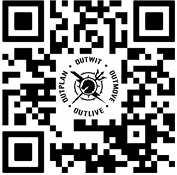 To view the video content embedded throughout this book, youll need a smartphone. Try it out by putting your phone in camera mode and pointing it at the QR code below. Use the default photo modeportrait mode wont work. And make sure all edges of the barcode are visible. When your phone reads the code, youll either be automatically jumped to the video or see a drop-down link to click on.
To view the video content embedded throughout this book, youll need a smartphone. Try it out by putting your phone in camera mode and pointing it at the QR code below. Use the default photo modeportrait mode wont work. And make sure all edges of the barcode are visible. When your phone reads the code, youll either be automatically jumped to the video or see a drop-down link to click on.
Enough talking. Lets get ready to practice some deadly combat strategies and techniquespractice being the key word. Lather, rinse, and repeat. In a survival situation, fast-twitch muscle memory is your friend. Practice the skills in this book until they become second nature. Who knows? One day you just might run into me.
001. SPEAR
Spontaneous Protection (Startle Flinch) Enabling Accelerated Response (Loading Toward Danger)
Situation: Fight or flight is the bodys survival response to a perceived threat or danger. During this reaction, hormones like adrenaline and cortisol are released, increasing heart rate, slowing digestion, shunting blood flow to major muscle groups, and changing various nervous system functions, giving the body a burst of energy and strength. A split second before hormones are released, the startle flinch engages to protect the brain and body. We all physically react somewhat the same when startled. Our hands fire up to protect our head, we widen our stance, we bend at the knees bracing for impact, sounds get louder, and our vision gets narrower. Embracing these physical response characteristics and directing them toward danger sets us up to survive, regardless of stimuli.
Mission: Use your startle flinch as a bridge to engage danger.
Execution : Upon confrontation, and especially when caught off guard, your nonviolent posture should adapt slightly to the threat. Move your strong side to the rear with a slight step to adopt a more solid sport stance. Your fingers are slightly curled and splayed wide open, and your elbows are outside of ninety degrees to act as both a spear and a shield. Your weight is distributed evenly on both legs and you anchor to the ground through the balls of your feet. There are three types of flinches: primal covering of your head, pushing away danger, and oblique, as you turn to the side with your chin tucked in and cover your head. Then, as you are now in an ideal position to engage, keep the fingers splayed, thumbs and index fingers touching to form a SPEAR, and drive your hands toward the danger while changing the elevation and the angle of your counterattack.

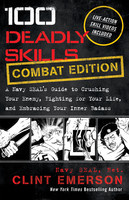
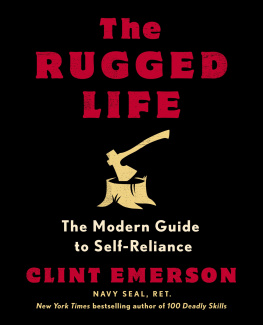
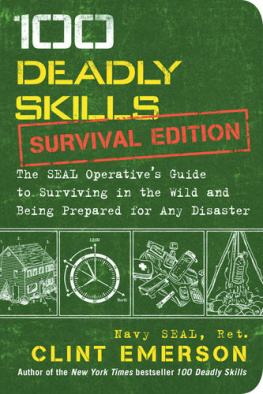
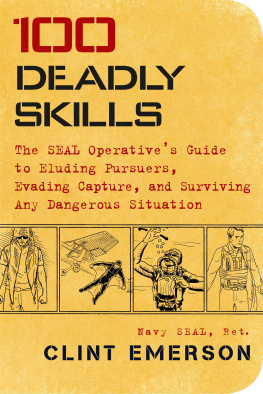


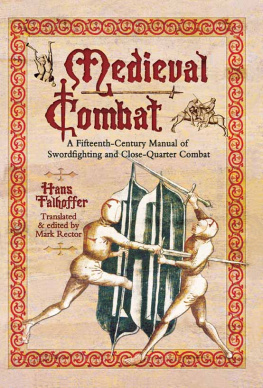

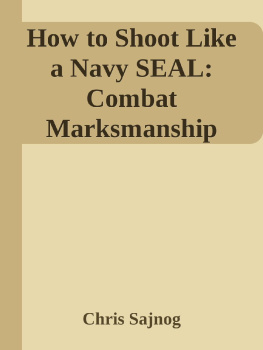





 To view the video content embedded throughout this book, youll need a smartphone. Try it out by putting your phone in camera mode and pointing it at the QR code below. Use the default photo modeportrait mode wont work. And make sure all edges of the barcode are visible. When your phone reads the code, youll either be automatically jumped to the video or see a drop-down link to click on.
To view the video content embedded throughout this book, youll need a smartphone. Try it out by putting your phone in camera mode and pointing it at the QR code below. Use the default photo modeportrait mode wont work. And make sure all edges of the barcode are visible. When your phone reads the code, youll either be automatically jumped to the video or see a drop-down link to click on.